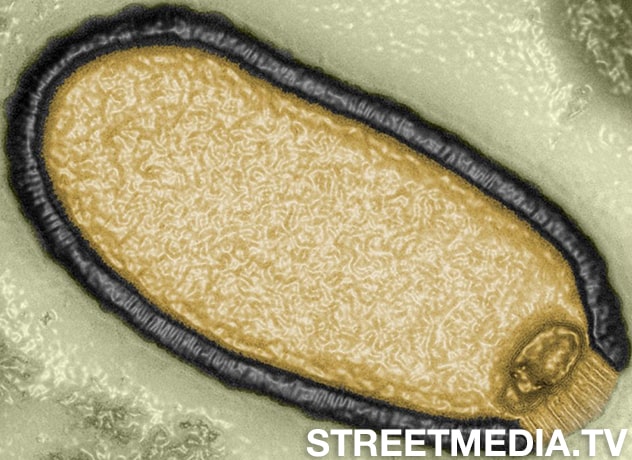Reviving a Deadly Zombie Virus: The Discovery of Pithovirus Sibericum and the Risks of an Outbreak

In a groundbreaking discovery, a team of scientists has successfully revived a deadly ‘zombie’ virus that has been frozen in permafrost for 48,500 years. The virus, known as Pithovirus sibericum, was discovered in the Siberian tundra and has been hailed as one of the most significant discoveries in recent years.
The discovery of Pithovirus sibericum has raised concerns about the dangers of reviving ancient viruses that have been dormant for thousands of years. The virus was revived by a team of scientists from Russia, France, and the United States who are studying the effects of climate change on permafrost. They discovered the virus in the permafrost soil of the Kolyma River in Siberia.
Pithovirus sibericum belongs to a group of viruses called giant viruses, which are much larger than typical viruses. This virus is about 1.5 micrometers in length, making it one of the largest viruses ever discovered. It also has a unique shape, resembling an oversized bottle.
The discovery of Pithovirus sibericum is significant because it demonstrates the resilience of viruses. Despite being frozen in permafrost for thousands of years, the virus was able to come back to life after being thawed. This raises concerns about the possibility of other ancient viruses being revived and the potential risks associated with that.
The scientists who discovered Pithovirus sibericum were surprised by how easily the virus was able to infect amoebas. Amoebas are single-celled organisms that are commonly found in soil and water. The virus was able to infect and replicate in amoebas, causing them to burst open and release more viruses into the environment.
While the virus poses no threat to humans, it is a reminder of the potential risks associated with climate change. As permafrost thaws due to rising temperatures, ancient viruses and bacteria that have been dormant for thousands of years could be released into the environment. This could lead to the spread of new diseases and the re-emergence of old ones.
The discovery of Pithovirus sibericum has sparked debate among scientists about the ethics of reviving ancient viruses. Some argue that studying these viruses could help us understand how viruses evolve over time and how they adapt to new environments. Others worry about the potential risks associated with reviving ancient viruses and the possibility of these viruses escaping from laboratories.
There are also concerns about the impact of climate change on permafrost. Permafrost is a layer of frozen soil that covers much of the Arctic region. As temperatures rise, permafrost is melting, releasing carbon dioxide and methane into the atmosphere. This contributes to global warming, leading to further melting of permafrost in a vicious cycle.
The discovery of Pithovirus sibericum highlights the need for more research into the effects of climate change on permafrost. It also raises questions about how we can prevent the release of ancient viruses and bacteria into the environment.
One solution could be to limit human activities that contribute to climate change, such as burning fossil fuels and deforestation. By reducing our carbon footprint, we can slow down the process of permafrost melting and minimize the risks associated with releasing ancient viruses and bacteria.
Another solution could be to develop better monitoring systems for permafrost. By tracking changes in permafrost temperature and composition, scientists can detect the release of ancient viruses and bacteria and take steps to contain them.
In conclusion, the discovery of Pithovirus sibericum is a significant breakthrough in the study of ancient viruses. While it poses no threat to humans, it raises concerns about the risks associated with reviving ancient viruses and the impact of climate change on permafrost. By taking steps to limit our carbon footprint and develop better monitoring systems.



